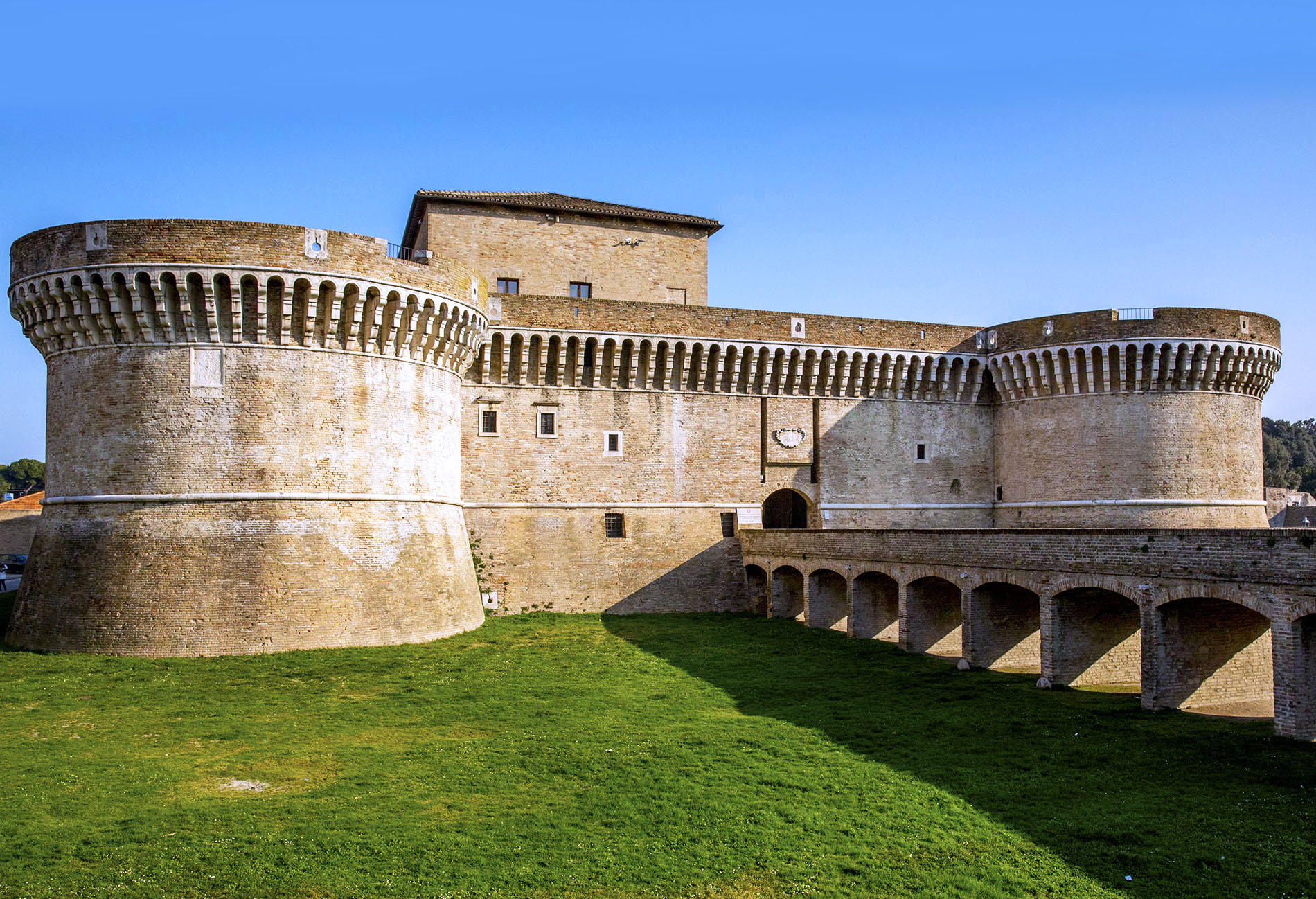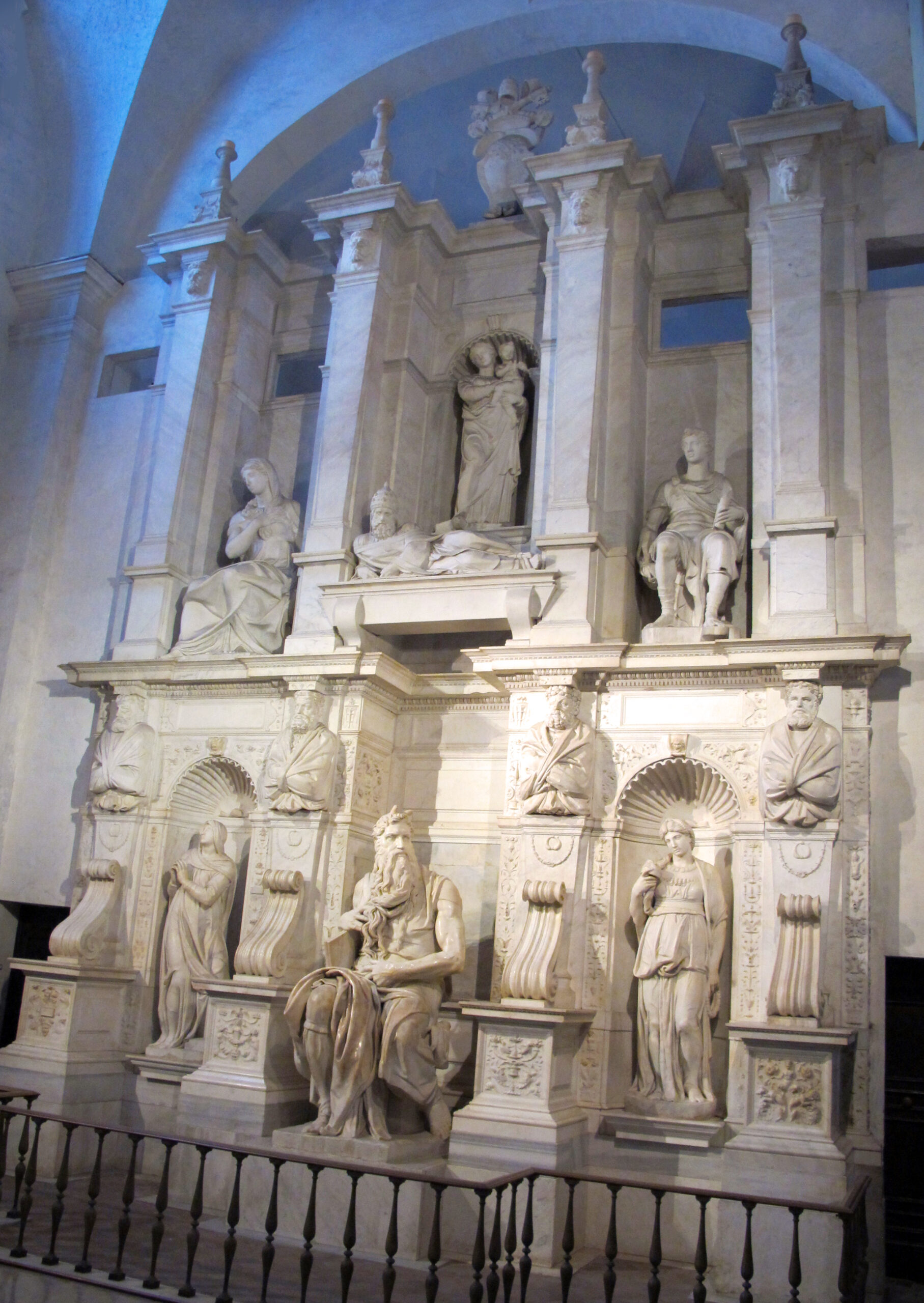The region of Marche has many attractions for those who relish visiting “off-the-beaten-track” spots in Italy. The province of Ancona is one of the areas that is unbelievably and unjustifiably ignored by international tourists, but its beauty and sights are something to behold. The bustling port town of Ancona is the capital of both the province and the region and is one of the main harbors of the Adriatic Sea. The city was founded in 387 BC and the name Ancona comes from the Greek word used to describe its elbow-shaped harbor. Julius Caesar took possession of it after crossing the Rubicon River in 49 BC and the city’s harbor was enlarged by Trajan. The senate and the people of Ancona erected an arch standing over 60 feet tall in the Emperor’s honor in 115 AD.
After the fall of the Roman Empire, Ancona was successively attacked by the Goths, Lombards and Saracens, but it later regained political and economic strength and its importance grew. For 150 years, it existed as an independent state, until it was forced to become a Papal State in 1532.
There are plenty of sights to see in the city of Ancona. The cathedral stands at one of the highest points and was built in the Romanesque-Byzantine style, with Gothic influences and constructed with white stone from Monte Conero. Its pillars are supported by lions made from Veronese red marble. The cathedral’s dome is one of the oldest in Italy.
Washington D.C. has a very famous building known as the Pentagon, but in Ancona is another enormous pentagon called the Mole Vanvitelliana. Built on an artificial island in 1733, it served as a quarantine station, military citadel, a sugar refinery and is now a museum. It is impossible to miss if you stand at the harbor. You will not believe how enormous it is, at over 200,000 square feet. While engaging in a little history, you will find that not far away is the Museo Archeologico Nazionale, National Archaeological Museum, housed in the Palazzo Ferretti and the Pinacoteca Civica, Municipal Art Gallery, in the Palazzo Bosdari.
Although a significant amount of the province’s population is located near its capital, there are many pretty and interesting small towns and villages that are well worth a visit. The town of Loreto is a world-famous destination for religious pilgrimages thanks to the presence of the “Holy House.” The basilica enshrines the house in which the Blessed Virgin Mary is believed to have lived. Pious devotees believe that the same house was flown over by four angels from Jerusalem, first to Tersatto, then to Recanati, before arriving at the current site in 1294. The town’s profile is dominated by the basilica’s dome and the statue of the Virgin Mary.
In Castelfidardo you will find a town famous for the production of accordions used in traditional Italian folk music. If you do not feel like carrying home the heavy instrument, pick up a harmonica instead. They too, are made in this small town. Castelleone di Suasa is well-known for its medieval castle, beautiful historic center, archaeological museum and the archaeological park, an ancient Roman town.
Traveling to Corinaldo, you will find 14th century walls surrounding the town that are perfectly preserved. You can stroll along the 3,000 foot long walkway atop the towering walls and admire its defensive towers, peculiar dovetail battlements and amazing panoramic views. Considered to be one of the best-preserved and most charming villages in Italy, Corinaldo is also known as the Città dei Matti, City of Fools, where you will find the famous Cannone di Fico and Casa di Scuretto, which are linked to stories rich in charm and humor. Finally, the not-to-be-missed attraction in Corinaldo is Piaggia, a 100 step stairway. When you are halfway up or down, you will encounter a famous well, called Pozzo della Polenta, Well of Polenta. The well is connected to the historical re-enactment of Contesa del Pozzo della Polenta, one of the most important events in Corinaldo. It takes place every year during the third week of July, where the village becomes crowded with jugglers, acrobats, flag wavers and other medieval characters. With jousts, tournaments and shows, it is like a passport back to the Middle Ages.
Situated on the main road from Umbria to the Adriatic coast, Fabriano is one of the more accessible towns in the mountainous area in Ancona. There are some interesting buildings such as the Palazzo del Podestà, the Sturinalto Fountain, the Communal Palace and the Vasari Portico. It was one of the first towns in Europe to produce high quality paper and there is a museum dedicated to paper in the town.
In the town of Genga you will find the 11th century San Vittore Abbey, but the “must see” attraction is one of the most visited natural curiosities in central Italy, the Frasassi Caves. The immense cave system was only discovered in 1971. The huge rooms of the caverns are filled with stunning stalactites and stalagmites. Highlights of the tour include the Ancona Abyss, a room so large that Milan’s Duomo could easily fit inside; a crystallized lake, a subterranean canyon and a room filled with formations that resemble candles. The tourist trail is on a walkway with some stairs and it is well lit. Visitors should wear comfortable shoes and a jacket, since the temperature remains at a steady 57°F all-year round.
Jesi is one of the more important towns of the province and is an industrial and artistic center. Enclosed by 14th century walls, it has a convent and theater, each dating back to the 18th century, as well as one of the most outstanding examples of Italian Rococo art in the Palazzo Pianetti.
Lying six miles north of the Ancona is the seaside town of Falconara Marittima, famous for its long, sandy beach. Concerts and other cultural events take place in the Cormorano Park complex to the north of the town, which also contains a small zoo.
The town of Senigallia was founded in the 4th century BC by the Gauls. In 295 BC, it was conquered by the Romans who named it Sena Gallica. Its most fascinating history took place in the 16th century, when the town came under the control of Cesare Borgia, also known as Duke Valentinois. He was one of the children of Pope Alexander VI and was the model for Machiavelli’s “ideal” Prince. In 1503, Rocca Roveresca, the castle of Senigallia, was conquered by Borgia, where he later carried out the famous massacre of his opponents, when he lured them to dinner to iron out their differences. The defensive structure was already present when the town was founded by the Romans. The Rocchetta, a small castle built in the 14th century, is still visible, together with the Rocca castle that was added in 1450. Rocca Roveresca is a unique monument because it was not only a fortress, but also a noble palace, founded by Guidubaldo della Rovere in 1533. After the extinction of the Ducal dynasty, when the town returned under the domain of the Church in 1631, the castle was used as a Papal prison and an orphanage. Today it hosts art exhibitions and prestigious cultural events. With so many fascinating sights to see, on your next visit to central Italy, make sure to allow a few days to travel through the remarkable Province of Ancona.





